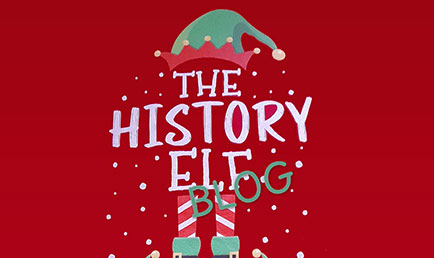I cut my teeth on writing textbooks, so it was with some comfort that I approached a writing group challenge to write a travelogue. It was fun to play with the balance between creativity and information-sharing. This article was placed third in an internal competition. The judge didn’t like the practical points at the end, but it is a feature of my autism that I could not overlook those aspects of my experience.
:
DISCOVERING BLACK GOLD
As the pulse of turn-offs for suburbs of Greater Manchester fades away and Cumbria’s fells loom, it feels as if you have entered the land of giants and wizards. A staggering eighteen million people visit the Lake District every year, despite its reputation for relentless rain, and despite the fact that many of its best views can only be accessed by sheer hard work. I recommend slogging up the fells on the dry or nearly dry days that the weather gods grant you. There are other lovely things to do when you wake up to water pouring from the sky.
On such a morning on a recent visit to the Lakes, I joined a discussion over breakfast at the hotel about the local attractions. Ideas were mooted, pros and cons discussed, and I narrowed my choices to three – The Wordsworth Museum near Grasmere, Honister Slate Mine and the Pencil Museum in Keswick. Quick searches revealed that the first two, which might have been favoured on any other day, were closed. The Pencil Museum is not well-known, but it is reassuringly accredited by Visit England. I was happy enough to set out to learn more about pencils. Why not? Dear reader, I went in taking pencils for granted, and I came out wanting to start a pencil cult!
There was a warm welcome at the reception desk, and I got the comforting feeling that the staff were pencil enthusiasts. I paid the modest fee and was given a quiz, a pencil, and a promise of more free pencils if I completed the quiz correctly. This was my first shot of adrenaline! I love quizzes and prizes, and I admired the marketing psychology of it. How better to ensure that visitors make the most of what the museum has to offer?
The first experience is the eerie gloom of a reconstruction of the Seathwaite graphite mine. We cannot know pencils without learning about graphite. It’s the bit in the middle, which has the misleading name of “lead”, because it looks like lead. Information boards and displays of fascinating objects explain the significance of graphite. A pure form of it was discovered in the fells near Keswick in the sixteenth century. Cumberland graphite was used in many industrial processes, including lining the moulds for cannonballs, so it was very valuable and well-guarded. Indeed, it was dubbed “black gold”.
Over the next two centuries, the technology of pencils developed from large graphite sticks used to mark sheep to the delicate graphite stick encased by wood that is familiar to us today. In 1832, the Derwent Cumberland Pencil Company was established. Manufacturing enthusiasts should note that the production of pencils moved from Keswick to Workington in 2007. There are factory tours at that location, which are very popular and need to be pre-planned. In the Keswick Museum, there are videos and displays which explain the craftsmanship, engineering and process of pencil production.
The Pencil Museum is in a small space, which is remarkably well-utilised. The displays of vintage pencils reminded me how important and versatile the pencil has been throughout the past two centuries. It has been the preferred writing implement of scientists, but also a favourite for small children. Appropriately, the museum is everything from a geek’s paradise to family-oriented fun. Children can enjoy displays about coloured pencils, special edition pencils and a drawing zone.
Each visitor might have their own favourite from the inspiring pencil drawings and sculptures on show. A popular item is the giant pencil, nearly eight metres long and with a weight to match. However, it was the tiniest of sculptures of animals and objects, carved in graphite on the tips of pencils, that had me awed. To someone who has difficulty even sharpening a pencil neatly, they are exquisite examples of skill and patience. This is reflected in the high price of pencil sculptures – I checked them out on eBay.
There is more. The mighty pencil helped us to win World War Two! No visit is complete without spending time at the video and displays explaining how space for hidden maps was designed into pencils. It is a glorious hymn to the ingenuity and innovation of the Derwent engineers, and a poignant reminder of the risks taken by the pilots and agents who used these special products.
This museum has something to wonder at in every nook and cranny. This is also true of its shop. Most museums I visit have underwhelming shops. In contrast, the Derwent Fine Art Shop at the Pencil Museum offers unique mementos for every budget. Beautiful collections of pencils and other art supplies are available, from the highly technical to children’s colouring-in books. I am not an artist, but I was excited to buy some unusual shades of pencil for my list-making and note-taking. Rose Gold, Shadow and Port have proved to be particular favourites.
I’m still thinking about and talking about the Pencil Museum, weeks after being there. All hail, King Pencil! The Pencil Museum is a classic “hidden gem”, or should I say “a nugget of black gold”? It is well worth a couple of hours of a tourist’s time.
Practical considerations to make your visit hassle-free:
The Pencil Museum is a short walk from the centre of Keswick. If you are combining a visit to the town on a wet day, you will need a decent raincoat and umbrella. There is an adjacent council car park where you must pay and display. The museum has a café, but you will probably want to check out the vast choice of cafes in the town centre, where you can also explore the gift shops, outdoor clothing stores and the Cheese Deli.
Above all, please note that the Pencil Museum is small. Queues do build up, so go early!







